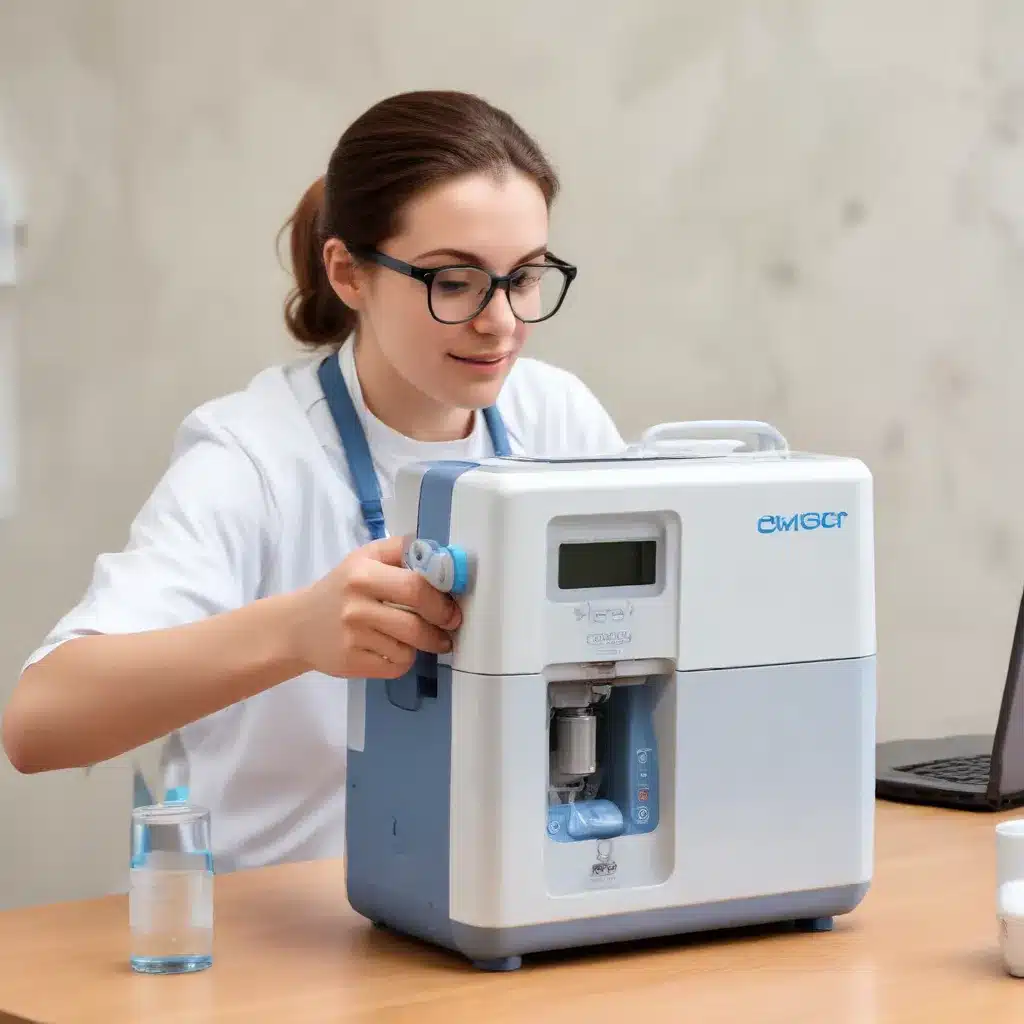
The Importance of Accurate Flow and Purity Monitoring
Portable oxygen concentrators (POCs) have become essential medical devices for individuals with respiratory disorders, providing a reliable and convenient source of supplemental oxygen. These compact, battery-powered units extract oxygen from ambient air, concentrating it to deliver higher oxygen levels to the user. However, to ensure the safety and effectiveness of oxygen therapy, it is crucial to accurately monitor both the oxygen flow rate and purity delivered by these devices.
Maintaining the proper oxygen flow rate is critical, as it determines the amount of supplemental oxygen the patient receives. If the flow rate is too low, the user may not get the necessary oxygen support, while an excessive flow rate can result in wasted oxygen and increased energy consumption. Similarly, monitoring the purity of the oxygen produced is essential, as patients require a consistent supply of highly concentrated oxygen, typically between 90-95% pure, to effectively manage their respiratory conditions.
Leveraging Sensors and Microcontrollers for Precise Monitoring
To address the need for accurate flow rate and purity monitoring, researchers have explored the use of air pressure sensors integrated with microcontroller-based systems. By strategically placing pressure sensors within the oxygen flow path of a POC, it is possible to gather real-time data on the pressure variations, which can then be translated into precise flow rate measurements.
The HX710B air pressure sensor, for example, is a compact and energy-efficient solution that can be easily integrated into POC designs. This sensor module features a high-linearity pressure sensor and a 24-bit analog-to-digital converter, allowing for accurate digital pressure and temperature readings. By connecting the HX710B to an Arduino or similar microcontroller, the POC’s control system can continuously monitor the air pressure and adjust the oxygen generation process accordingly, ensuring the user receives the prescribed flow rate.
Enhancing Oxygen Purity with Lithium Zeolite
In addition to flow rate monitoring, the purity of the oxygen generated by POCs is also a critical factor. One promising material for improving oxygen purity is lithium zeolite, a type of zeolite that has a high affinity for selectively adsorbing nitrogen molecules from the air. By incorporating lithium zeolite into the POC’s pressure swing adsorption (PSA) process, the concentration of oxygen in the output stream can be significantly increased, often reaching up to 95% purity.
The use of lithium zeolite in POCs offers several benefits, including:
- Higher Oxygen Purity: The selective adsorption of nitrogen by lithium zeolite results in a more concentrated oxygen output, providing users with a higher quality of supplemental oxygen.
- Improved Energy Efficiency: The enhanced adsorption capabilities of lithium zeolite can lead to a reduction in the energy required for oxygen separation, making POCs more efficient and cost-effective to operate.
- Compact and Lightweight Design: Lithium zeolite-based POCs can be designed to be smaller and lighter than traditional concentrators, improving portability and user mobility.
Integrating Health Monitoring Capabilities
The combination of flow rate and purity monitoring in POCs can also open the door to further advancements in respiratory healthcare. By integrating air pressure sensors and microcontroller-based systems, POCs can potentially gather additional data on the user’s respiratory function, such as breathing patterns, tidal volumes, and inspiratory times.
This integrated health monitoring capability could allow for personalized oxygen therapy, where the POC automatically adjusts the oxygen delivery to meet the user’s specific needs based on their real-time health status. Additionally, the collected data can be analyzed over time to provide healthcare providers with valuable insights into the user’s respiratory condition, enabling more proactive and effective management of their underlying lung disease.
Overcoming Challenges and Ensuring Responsible Implementation
While the integration of advanced sensors and lithium zeolite technology in POCs holds great promise, there are also some challenges that must be addressed to ensure the successful and responsible implementation of these innovations:
- Privacy and Data Security: The collection of sensitive health data through POCs raises concerns about patient privacy and data security. Robust data protection measures and compliance with relevant regulations must be ensured.
- Regulatory Approvals: For POCs intended for medical use, clinical trials and regulatory approvals may be required to validate the safety and efficacy of the integrated health monitoring features.
- Environmental Impact: The development of more compact and efficient POCs should also consider the environmental impact, including energy consumption, materials usage, and end-of-life disposal.
By addressing these challenges and collaborating with healthcare providers, regulators, and technology experts, the integration of advanced monitoring capabilities and cutting-edge materials like lithium zeolite can significantly enhance the performance and functionality of portable oxygen concentrators, ultimately improving the quality of life for individuals with respiratory disorders.
Conclusion
Portable oxygen concentrators have become essential medical devices for people with respiratory conditions, providing a reliable and convenient source of supplemental oxygen. To ensure the safety and effectiveness of oxygen therapy, it is crucial to accurately monitor both the flow rate and purity of the oxygen produced by these devices.
By leveraging air pressure sensors and microcontroller-based systems, POCs can now precisely measure the oxygen flow rate and purity, allowing for optimal oxygen delivery and personalized therapy. The incorporation of lithium zeolite, a material with exceptional nitrogen adsorption capabilities, further enhances the purity of the oxygen generated, improving the overall efficiency and performance of these devices.
As the integration of advanced monitoring and material technologies continues to evolve, the future of portable oxygen concentrators holds great promise. By addressing the challenges around privacy, regulatory approvals, and environmental impact, these innovations can transform the landscape of respiratory healthcare, empowering individuals with respiratory disorders to live more active, independent, and healthier lives.

